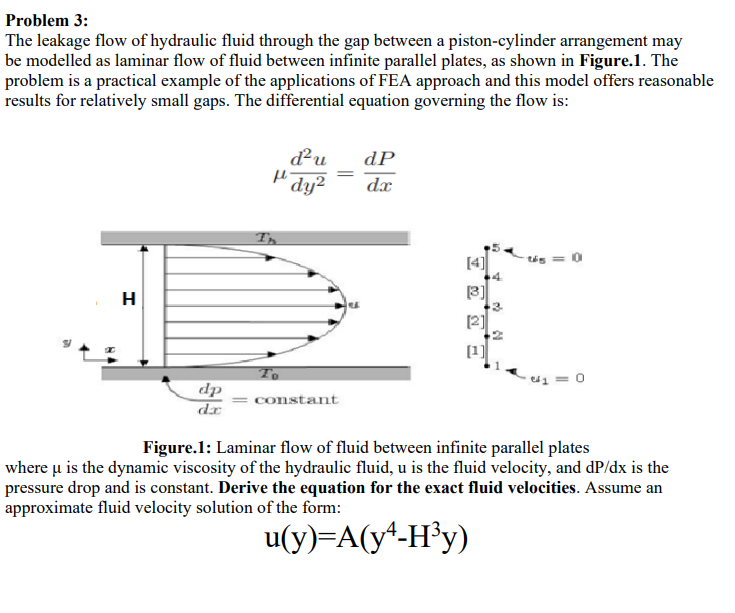Home /
Expert Answers /
Mechanical Engineering /
problem-3-the-leakage-flow-of-hydraulic-fluid-through-the-gap-between-a-piston-cylinder-arrangemen-pa913
(Solved): Problem 3: The leakage flow of hydraulic fluid through the gap between a piston-cylinder arrangemen ...


Problem 3: The leakage flow of hydraulic fluid through the gap between a piston-cylinder arrangement may be modelled as laminar flow of fluid between infinite parallel plates, as shown in Figure.1. The problem is a practical example of the applications of FEA approach and this model offers reasonable results for relatively small gaps. The differential equation governing the flow is: Figure.1: Laminar flow of fluid between infinite parallel plates where is the dynamic viscosity of the hydraulic fluid, is the fluid velocity, and is the pressure drop and is constant. Derive the equation for the exact fluid velocities. Assume an approximate fluid velocity solution of the form:
Note that the domain is divided into 4 elements with equal lengths, use the following methods to evaluate ) variational method (b) the subdomain method (c) Least square method (d) One Dimensional FEM based on Galerkin method (element matrices-Galerkin method). Compare the approximate results to the exact solution at the nodes if and .
Expert Answer
To derive the equation for the exact fluid velocities, let's start by substituting the approximate fluid velocity solution into the governing differential equation: Explanation: Taking the second derivative of with respect to :